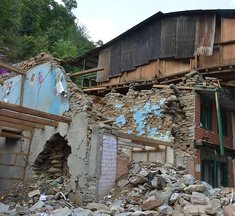Featured Quizzes
User Quizzes
Create Quiz
Data and Charts
Badges and Games
About JetPunk
JetPunk Shop
Dark Mode

Countries by Natural Disasters/Hazards and Geography
Each country has its own individual set of natural hazards and disasters. See if you can guess what each country is, based on the descriptions of its natural hazards. Countries are in alphabetical order.
Countries are in alphabetical order.
Source: CIA World Factbook
Rate:
Last updated: November 5, 2021
You have not attempted this quiz yet.
More quiz info >>
| First submitted | April 12, 2017 |
| Times taken | 298 |
| Average score | 57.1% | Report this quiz | Report |
5:00
Enter country here
0
/ 21 guessed
Time Used
00:00
Best Time
00:00
The quiz is paused. You have remaining.
Scoring
You scored / = %
This beats or equals
% of test takers
also scored 100%
The average score is
Your high score is
Your fastest time is
Keep scrolling down for answers and more stats ...
|
No comments yet
New and Popular
Save Your Progress
Geography, Countries, and Cities
Quiz series by interopia
...
Copyright H Brothers Inc, 2008–2024
Contact Us | Go To Top | View Mobile Site
